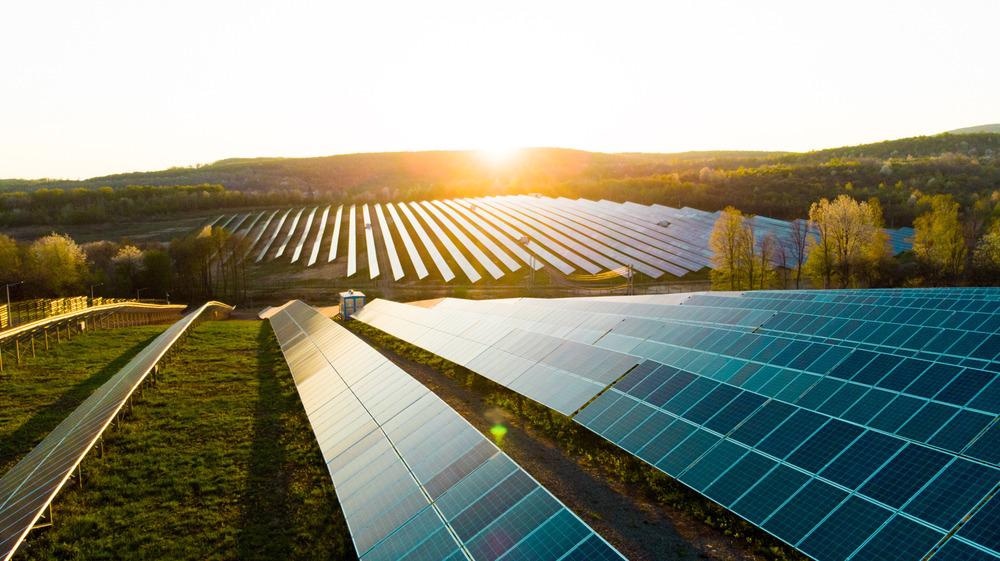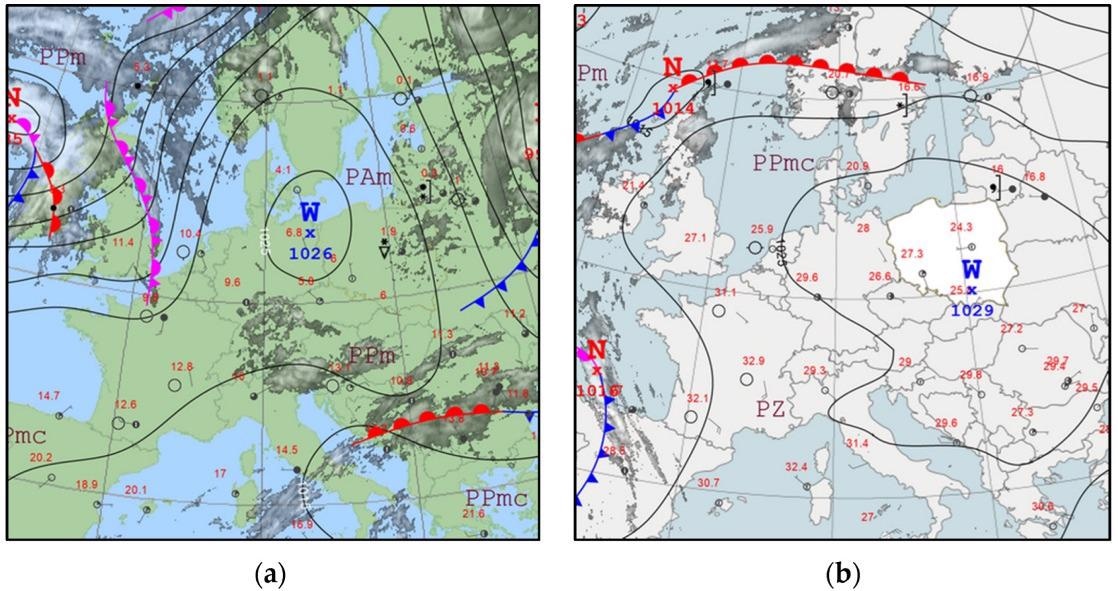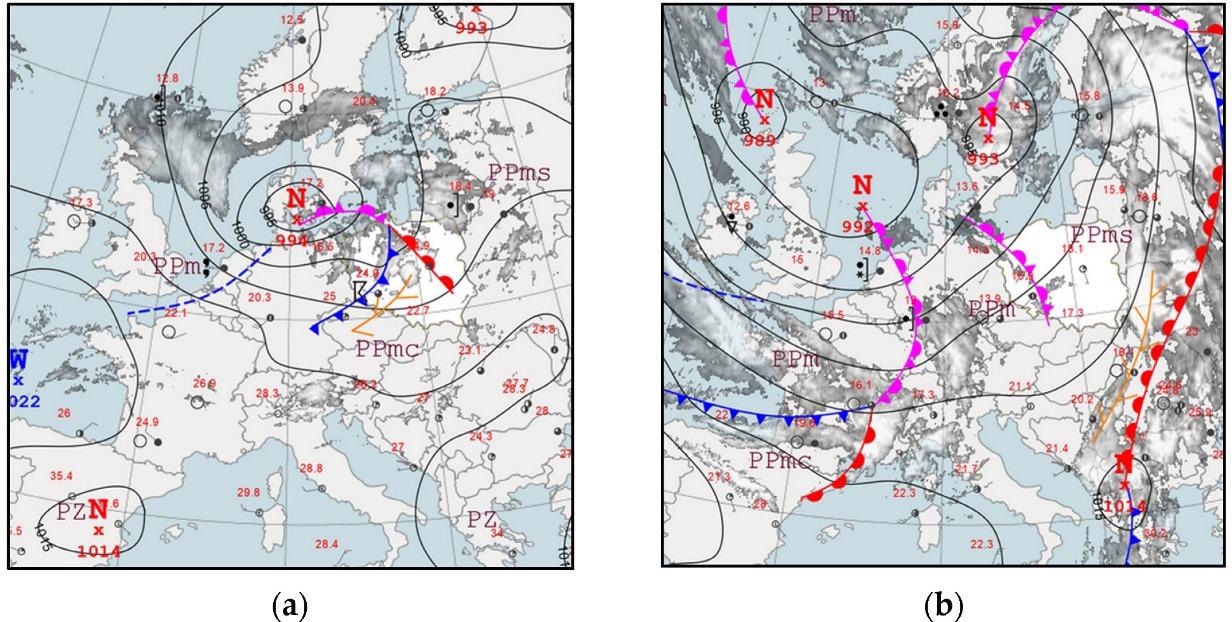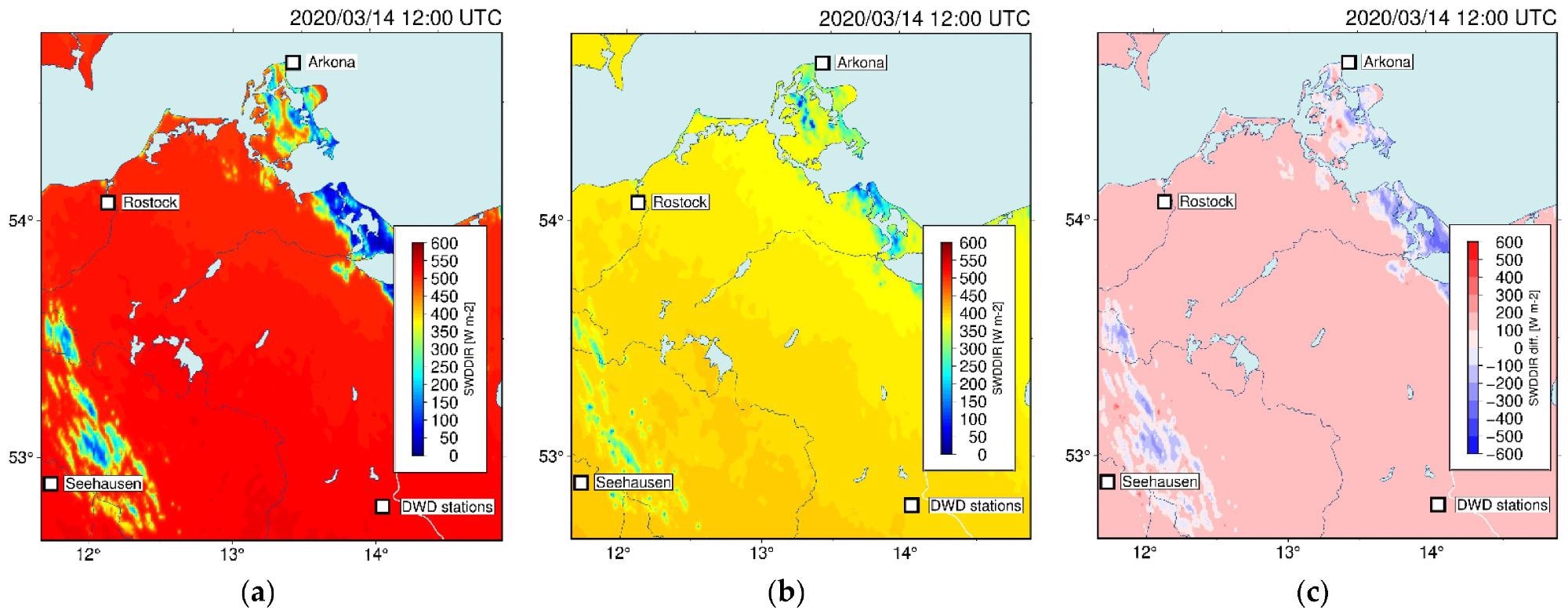Renewable energy is a key technology in the 21st century. Intimate knowledge of where to best locate photovoltaic solar cells, one of the key renewable energy strategies currently, requires accurate predictive models. This is the focus of a new paper in the journal Energies from researchers at the Military University of Technology in Poland.

Study: On Solar Radiation Prediction for the East–Central European Region. Image Credit: RenataP/Shutterstock.com
Photovoltaic Solar Cell Technologies
Photovoltaic solar cell technologies are fast becoming a ubiquitous technology, being installed on both domestic dwellings and in huge solar farms across the world. The EU, for instance, has focused on increasing the share of renewable energy technologies as part of their energy policies and strategies, with solar cells playing a huge part in this drive toward a post-fossil fuel energy future.

Synoptic maps from IMGW-PIB for the situations of: (a) 14 March 2020; and (b) 14 September 2020 (high-pressure situation). Image Credit: Mierzwiak, M, Energies
Significant advances in manufacturing technologies and materials have pushed the development of solar cell technologies in recent years and driven unit production costs lower. Aside from solar energy harvesting, solar water heaters have gained popularity in recent years. These technologies convert solar into thermal energy to provide hot water for domestic use or large-scale heating systems for apartment buildings.
The main advantage of photovoltaic solar cells, like all renewable energy technologies, is the lack of harmful greenhouse gas emissions that fossil fuels produce. Solar cell technologies are gaining popularity in all areas of the world, not just in locations with favorable solar conditions such as the tropics or equatorial regions. They have gained popularity in areas such as Northern Europe, where climactic conditions may not favor solar energy harvesting.
Improving Solar Forecasting Models
Due to their growing popularity, models that forecast potential yields and climatic conditions and provide information on the optimal location of solar panel installations are increasingly vital in the renewable energy industry. These models are particularly important for power installations, and to properly elucidate the optimal parameters, information on the amount of solar radiation reaching the Earth’s surface is essential.
Accurate forecasting allows an estimation of the amount of power that can be generated in a given location. However, numerical models alone cannot accurately predict real-world meteorological conditions, including short-term and seasonal weather variations. Therefore, there is a need to integrate meteorological data into forecast models. Numerical weather prediction models, such as the Global Forecast System, the Weather Research and Forecasting (WRF) model, and the Icosahedral Nonhydrostatic Model, are popular.

Synoptic maps from IMGW-PIB for the situations of: (a) 26 August 2020; and (b) 6 October 2020 (occluded front). Image Credit: Mierzwiak, M, Energies
Numerical weather prediction models are not just used to predict weather conditions. They are also used in forest fire risk estimation, fog occurrence forecasting (especially useful for solar energy harvesting) provides short-term forecasts for wind energy, model wind turbine performance, and so forth.
Growing interest in accurate forecasting for the solar power industry has led to the development of WRF-Solar, a dedicated model for estimating solar conditions. Appropriately configuring parameters improves the functionality of the model and therefore enhances the forecasting accuracy, especially for geographical locales with typically unpredictable weather phenomena.
The Study
The new research paper aims to evaluate the feasibility of solar radiation forecasting in geographical areas which are temperate and have high cloud cover. Cloud cover is one of the most unpredictable weather phenomena, which is also important for solar energy harvesting and limits the amount of direct solar radiation that can be absorbed by photovoltaic solar cells. Climate models have demonstrated that in the future, some areas of the world will possess more favorable solar conditions than currently (for instance, central Europe.)
Northeastern Germany was chosen as the location for the study, as this area has highly unpredictable weather patterns, with cloud cover a common occurrence, which would otherwise limit the effectiveness of solar energy harvesting in this geographical location. Several significant weather fronts characterize the area’s climate, with almost one-third of the year experiencing high cloudiness conditions. The area was specifically chosen to evaluate the effectiveness of solar radiation forecasting in an area with unpredictable weather patterns.
The authors have stated that the optimal orientation of solar panels in relation to incident sunlight during exposure will help achieve maximum harvesting capabilities. Factors such as horizontal orientation, tilt, and tracking systems were considered. Additionally, the forecast provided information on cloud cover and its characteristics and improved the possibility of determining atmospheric fronts. Better results were obtained for occluded fronts than on days where cold fronts and warm fronts occurred.

Shortwave surface downward direct irradiance (SWDDIR) forecast for 14 March 2020 at 12:00 for: (a) Dudhia; (b) RRTMG; and (c) their differences. Image Credit: Mierzwiak, M, Energies
There is a lack of analysis of the target region currently, therefore the authors have stated that their new study may contribute to stimulating research which will help discover the WRF model’s optimal parametrization. Through a more intimate understanding of the conditions in the area analyzed, more effective forecasts will be possible in the future.
Model validation results demonstrated agreement between forecast data and direct measurements. The authors have stated that future work will focus on improving local data assimilation and the WRF model’s parameterization to achieve better results.
Further Reading
Mierzwiak, M, Kroszczyński, K & Araszkiewicz, A (2022) On Solar Radiation Prediction for the East–Central European Region Energies 15(9) 3153 | mdpi.com. Available at: https://www.mdpi.com/1996-1073/15/9/3153
Disclaimer: The views expressed here are those of the author expressed in their private capacity and do not necessarily represent the views of AZoM.com Limited T/A AZoNetwork the owner and operator of this website. This disclaimer forms part of the Terms and conditions of use of this website.